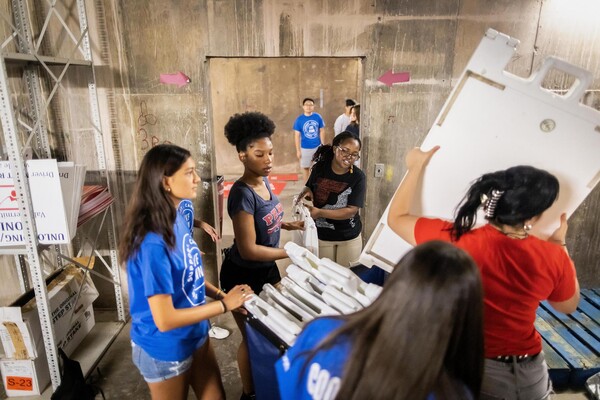Surfactant Curtails Nanotube Clumping in Water, Removing a Major Barrier to Many Applications
PHILADELPHIA – Scientists have long touted carbon nanotubes as a futuristic means of delivering drugs, fortifying brittle materials and conducting current in miniaturized circuits. But attempts to introduce actual nanotubes into these roles have often been stopped in their tracks by the slender filaments' stubborn and unhelpful tendency to clump together in solution.
Now scientists at the University of Pennsylvania have found that a readily available chemical, a surfactant called sodium dodecylbenzene sulfonate (NaDDBS), disperses nanotubes in water with remarkable efficiency. The discovery, described in a paper published this month in the journal Nanoletters, represents an important step towards wider applications of nanotubes.
"Scientists have suggested many possible applications for carbon nanotubes, but tube aggregation in solution has obstructed progress," said lead author Mohammad F. Islam, a postdoctoral researcher in Penn's Department of Physics and Astronomy. "This new approach improves our ability to manipulate single tubes. Single nanotubes can now participate in controlled self-assembly, form fibers and composites, and serve as microfluidic sensors in water."
When Islam and senior author Arjun G. Yodh added NaDDBS to a cocktail of water and nanotubes, the surfactant adhered weakly to the nanotubes, preventing the tubes from clinging to one another. Islam, Yodh and colleagues determined that NaDDBS increased the concentration of single carbon nanotubes in water up to 100-fold. Even at high concentrations, roughly 63 percent of nanotubes in aqueous solution remained unbound.
"Sodium dodecylbenzene sulfonate is pretty non-invasive, so we expect that the nanotubes' unique electronic, thermal, optical and mechanical properties will be preserved in suspension," said Yodh, a professor of physics. "An added bonus of our complete solubilization approach is that it is gentle. Mixing this particular surfactant with nanotubes and water in a low-power, high-frequency sonicator, as we did, resulted in very little breakage of the nanotubes, which has been a problem with other treatments."
Islam, Yodh and colleagues also found that NaDDBS-treated nanotubes resisted re-aggregation for as long as three months, a feat other surfactants could not match.
Carbon nanotubes tend to cling together because they are subject to substantial van der Waals attractions. While researchers have explored numerous surfactants to counter this attraction, Islam and Yodh suggest that NaDDBS's benzene ring, together with its long alkane tail and charge group, conspire to produce an unusual molecular arrangement on the nanotube surface that reduces aggregation.
Islam and Yodh conducted their studies of NaDDBS in aqueous solutions. Unlike various organic chemicals used as nanotube solvents, water is environmentally benign and compatible with biomedical applications.
Islam and Yodh were joined on the Nanoletters paper by co-authors Enrique Rojas, D.M. Bergey and Alan T. "Charlie" Johnson, all of Penn's Department of Physics and Astronomy and Laboratory for Research on the Structure of Matter. The research was funded by the National Science Foundation, NASA and the Petroleum Research Fund.
###
NOTE: A high-resolution image depicting vials of aggregated carbon nanotubes alongside a vial of nanotubes treated with NaDDBS is available.







